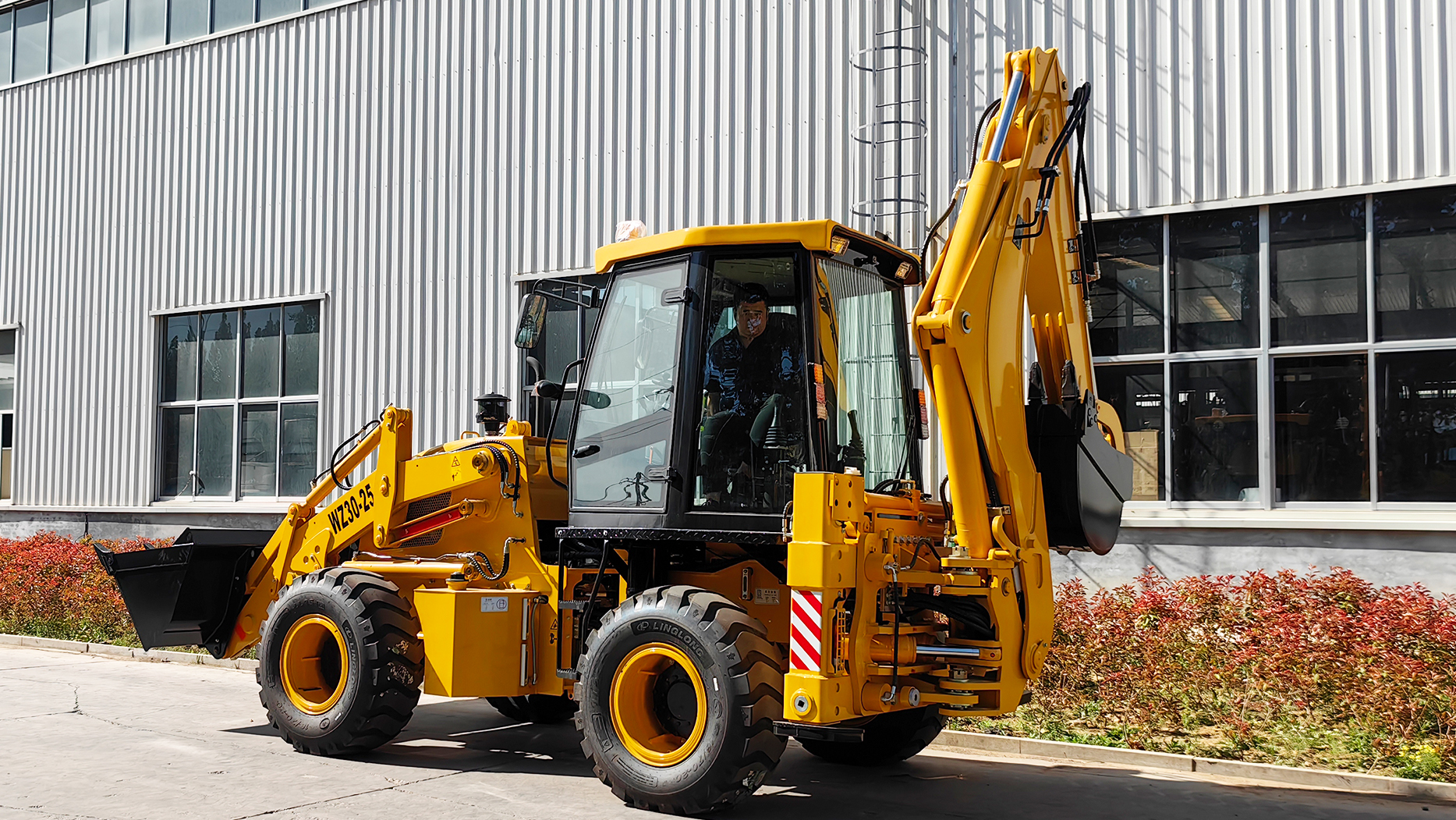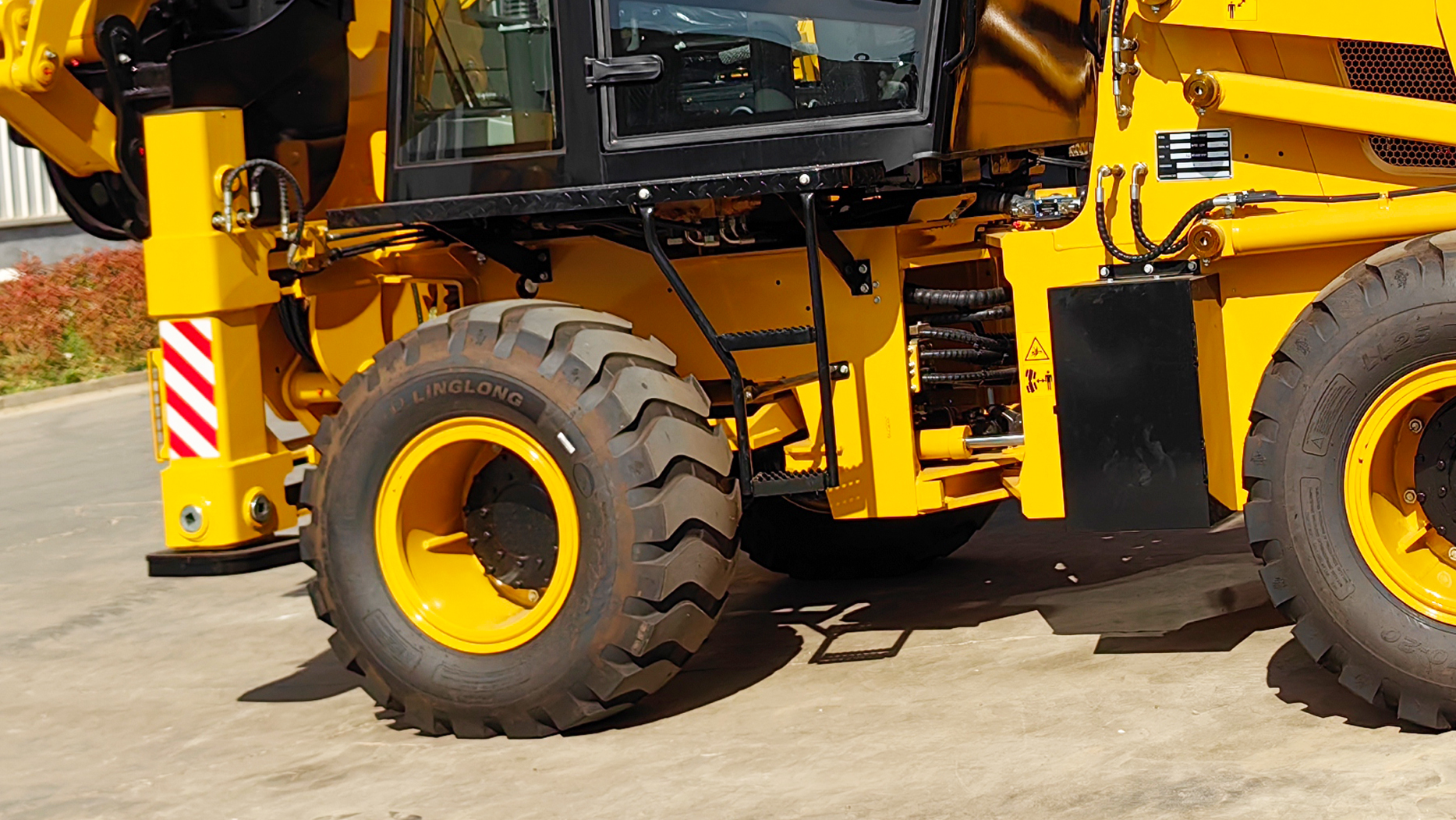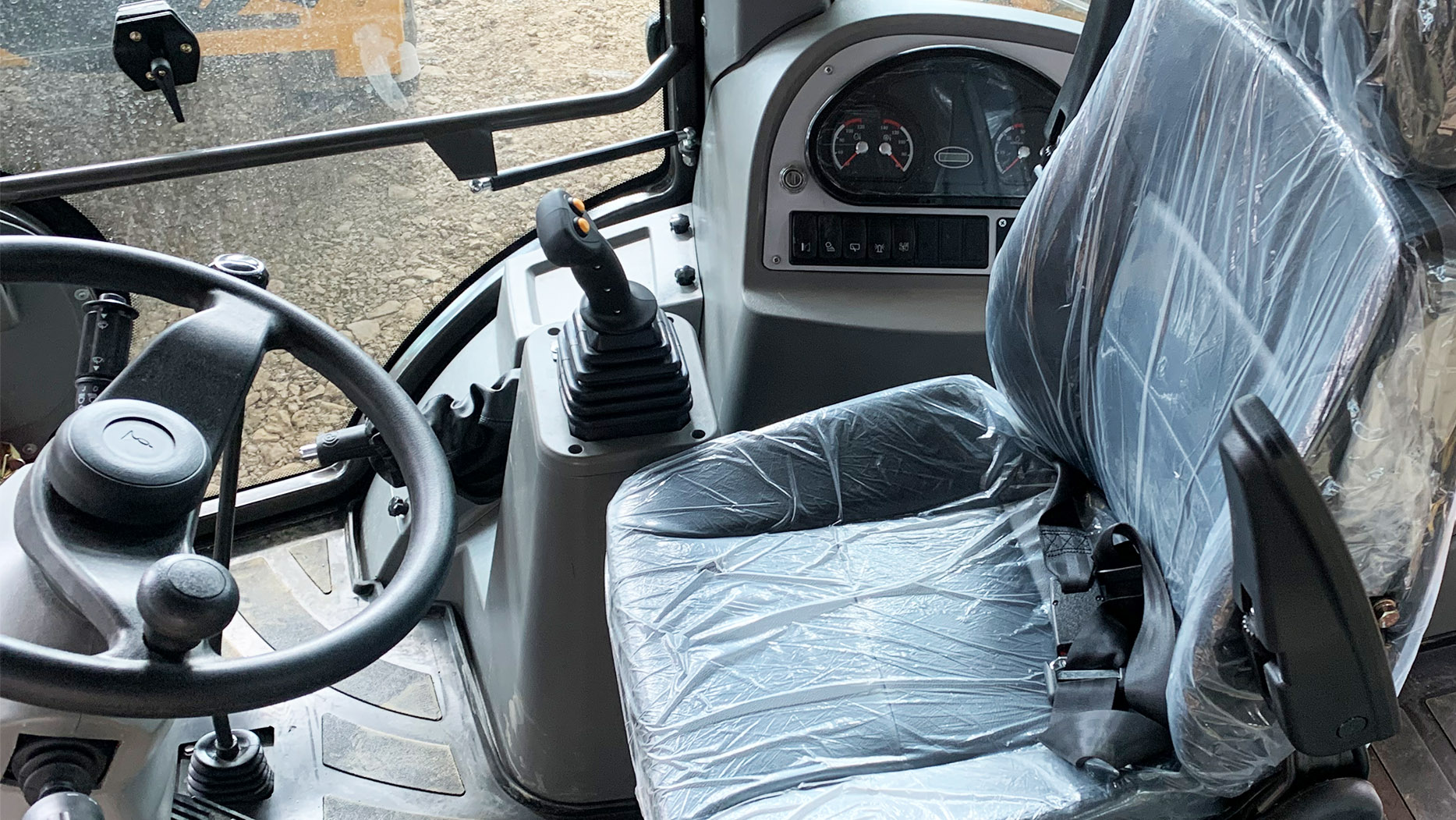Understanding "How to repair and maintain a backhoe loader" is vital for any owner, operator, or fleet manager. Proactive maintenance can significantly extend the machine's lifespan, reduce costly downtime, and enhance resale value, while proper repair procedures ensure that issues are resolved efficiently and effectively. Neglecting these aspects can lead to accelerated wear, major breakdowns, and substantial financial losses.
This comprehensive guide will walk you through the essential steps for maintaining your backhoe loader, common repair considerations, and best practices to keep your machine operating at peak efficiency for years to come.
The Foundation: Understanding Backhoe Loader Components
Before delving into maintenance and repair, it's helpful to understand the main systems that require attention:
Engine System: The heart of the machine, providing power for all operations. Includes lubrication, cooling, fuel, and air intake systems.
Hydraulic System: The muscle of the backhoe, responsible for moving the loader, backhoe, stabilizers, and attachments. Comprises pumps, cylinders, hoses, valves, and fluid.
Drivetrain & Transmission: Enables movement and power transfer to the wheels. Includes axles, differentials, and the transmission.
Electrical System: Powers the ignition, lights, gauges, controls, and various sensors.
Undercarriage & Tires: Supports the machine, provides traction, and absorbs shocks.
Structural Components & Attachments: The boom, stick, loader arms, buckets, and frame, which bear the brunt of digging and loading forces.
Operator's Cab: Controls, seating, safety features, and environmental systems.

Preventative Maintenance: Your Best Defense Against Downtime
The most cost-effective "repair" is prevention. Adhering to a strict preventative maintenance schedule is the single most important factor in maximizing your backhoe loader's lifespan and minimizing unexpected breakdowns. Always refer to your manufacturer's Operation and Maintenance Manual (OMM) for precise intervals and specifications, as these can vary by model and brand.
1. Daily (Every 10 Operating Hours or Before Each Shift):
Pre-Start Walkaround Inspection:
Visual Check: Look for any visible damage, dents, cracks, loose bolts, or missing parts.
Fluid Leaks: Inspect for any oil, hydraulic fluid, fuel, or coolant leaks under the machine or around components.
Tires: Check tire pressure (for wheeled models) and condition (cuts, bulges, uneven wear).
Hydraulic Hoses & Cylinders: Look for chafing, cracks, or leaks. Inspect cylinder rods for pitting or damage.
Pins and Bushings: Check all pivot points (loader, backhoe, stabilizers, cylinders) for excessive play or wear.
Buckets & Cutting Edges: Inspect bucket teeth, cutting edges, and general bucket condition for wear or damage.
Safety Features: Test backup alarm, horn, lights, and seatbelt.
Fluid Level Checks:
Engine Oil: Check with the engine off, on level ground.
Hydraulic Oil: Check with all cylinders retracted, on level ground.
Coolant: Check reservoir level.
Fuel System Water Separator: Drain any accumulated water.
Brake & Transmission Oil: Check levels as per OMM.
Greasing: Lubricate all accessible grease points on the loader, backhoe, stabilizers, and cylinders. This is crucial for reducing pin and bushing wear.
2. Weekly (Every 50 Operating Hours):
Battery: Inspect battery terminals for corrosion and ensure connections are tight. Check electrolyte level if applicable.
Air Filters: Inspect engine air filter primary element; clean or replace if necessary in dusty conditions.
Belts: Check tension and condition of engine belts (fan, alternator).
Cab Filters: Clean or inspect fresh air and recirculation filters.
3. Monthly / Quarterly (Every 250 & 500 Operating Hours):
Engine Oil & Filter Change: Replace engine oil and filter as per manufacturer's recommendations.
Fuel Filters: Replace primary and secondary fuel filters.
Hydraulic System: Inspect all hydraulic connections for leaks. Consider replacing hydraulic oil filter (often at 500 hours).
Transmission: Check transmission oil level and condition; replace filter at 500 hours.
Axle & Final Drive Oil: Check levels; change at initial 500 hours and then per schedule.
Cooling System: Inspect hoses and clamps for leaks. Clean radiator and oil cooler fins. Obtain coolant sample for analysis.
Electrical System: Inspect wiring for fraying or corrosion. Test all lights, gauges, and controls.
Tighten Fasteners: Check and tighten all accessible bolts and nuts, especially on structural components.

Annually / Major Intervals (Every 1000, 2000, 3000+ Operating Hours):
Comprehensive Fluid Changes: This includes full hydraulic oil change (e.g., 2000-3000 hours), transmission fluid change, axle, and final drive oil changes.
Coolant System Flush: Flush and replace coolant, add extender as recommended.
Engine Valve Clearance: Check and adjust if specified by manufacturer.
ROPS/FOPS Inspection: Inspect the Rollover/Falling Object Protective Structure for damage.
Wheel Bearings (Front): Lubricate.
Detailed Structural Inspection: Thoroughly inspect the boom, stick, loader arms, and chassis for cracks, welds, or deformation.
Common Backhoe Loader Repair Considerations & Troubleshooting
Even with meticulous maintenance, repairs will eventually be necessary. Knowing common issues and basic troubleshooting steps can save time and money. Always prioritize safety: lock out/tag out the machine and release hydraulic pressure before attempting any repairs.
1. Hydraulic System Issues:
Symptoms: Slow or weak hydraulic functions, jerky movements, excessive noise (whining/screeching from pump), fluid leaks, overheating.
Troubleshooting:
Check Fluid Level & Condition: Low fluid or contaminated/aerated fluid (milky appearance) is a common cause.
Inspect Filters: Clogged hydraulic filters restrict flow.
Inspect Hoses & Fittings: Look for visible leaks, chafing, or bulges.
Listen for Noises: Unusual pump noise could indicate a failing pump or air in the system.
Repairs: Refilling/flushing fluid, replacing filters, replacing damaged hoses/fittings, replacing worn seals in cylinders, or in severe cases, pump or valve rebuild/replacement.
2. Engine Problems:
Symptoms: Hard starting, loss of power, excessive smoke (black, white, blue), unusual noises, overheating.
Troubleshooting:
Check Fluid Levels: Engine oil and coolant are critical.
Fuel System: Check fuel filters, water separator, and ensure good fuel quality.
Air Intake: Inspect air filter for blockage.
Cooling System: Check radiator for debris, fan operation, and thermostat.
Repairs: Changing oil/filters, replacing fuel filters, cleaning/replacing air filters, radiator cleaning, addressing coolant leaks, potentially injector or turbocharger repair/replacement, or major engine overhaul for severe issues.

Drivetrain & Transmission Issues:
Symptoms: Difficulty shifting, slipping gears, loss of drive power, unusual noises from axles/transmission.
Troubleshooting:
Check Fluid Levels & Condition: Low or contaminated transmission/differential fluid.
Inspect Linkages/Cables: Ensure proper connection and adjustment.
Warning Lights: Monitor dashboard indicators.
Repairs: Fluid/filter changes, clutch pack replacement (for shuttle shift), addressing electrical issues in control systems, seal replacements, or professional transmission/axle rebuilds.
4. Electrical System Faults:
Symptoms: Non-functional lights, gauges, controls, intermittent power, starting issues.
Troubleshooting:
Battery: Test battery voltage and connections.
Fuses & Relays: Check and replace blown fuses or faulty relays.
Wiring: Inspect for frayed, corroded, or loose wires.
Repairs: Cleaning/tightening connections, replacing faulty components (sensors, solenoids, switches), or professional diagnosis for complex wiring issues.
5. Structural & Attachment Wear:
Symptoms: Cracks in boom/stick/frame, excessive play in pins and bushings, worn bucket teeth/cutting edges.
Troubleshooting: Regular visual inspection. Listening for squeaks or grinding.
Repairs: Welding cracks (by certified welders), replacing worn pins and bushings, replacing bucket teeth, cutting edges, or even full bucket replacement. Never operate a machine with known structural cracks until properly repaired.
Essential Tools & Resources for Backhoe Maintenance & Repair
Operator's and Service Manuals: These are indispensable. The operator's manual covers daily checks and basic maintenance. The service/shop manual provides detailed repair procedures, schematics (electrical, hydraulic), torque specifications, and diagnostic codes.
Basic Hand Tools: Wrenches, sockets, screwdrivers, pliers.
Grease Gun: For lubrication.
Fluid Draining Pans & Funnels: For clean fluid changes.
Hydraulic Pressure Gauge: For advanced hydraulic troubleshooting.
Multimeter: For electrical system diagnostics.
Safety Gear: Gloves, safety glasses, steel-toed boots, hard hat.
Diagnostic Software: For modern machines, manufacturer-specific software may be needed for complex electronic issues.
Reliable Parts Supplier: Having access to genuine OEM parts or high-quality aftermarket equivalents is crucial for effective repairs.
The Value Proposition: Repair vs. Replace
Deciding whether to repair or replace a major component or even the entire machine often comes down to economics. A general rule of thumb used in the industry is that if the cost of a major repair (e.g., engine overhaul, transmission rebuild) approaches 50% or more of the machine's current market value, replacement might be the more financially sound decision. However, this varies based on sentimental value, remaining useful life after repair, and tax implications. Regular, proactive maintenance drastically shifts this balance in favor of continued operation, as minor costs prevent major ones.
Conclusion: Investing in Longevity and Performance
Knowing "How to repair and maintain a backhoe loader" is not just about keeping the machine running; it's about safeguarding a critical business asset. Implementing a rigorous preventative maintenance schedule, understanding common troubleshooting techniques, and addressing issues promptly are the cornerstones of maximizing your backhoe loader's lifespan, ensuring consistent performance, and maintaining its value.
A well-maintained backhoe loader is a reliable backhoe loader—one that spends more time productively on the job and less time in the shop, contributing significantly to your project's success and profitability. Don't view maintenance as an expense, but rather as an essential investment in the long-term health and efficiency of your most versatile piece of equipment.
Post time:Jul.24.2025
